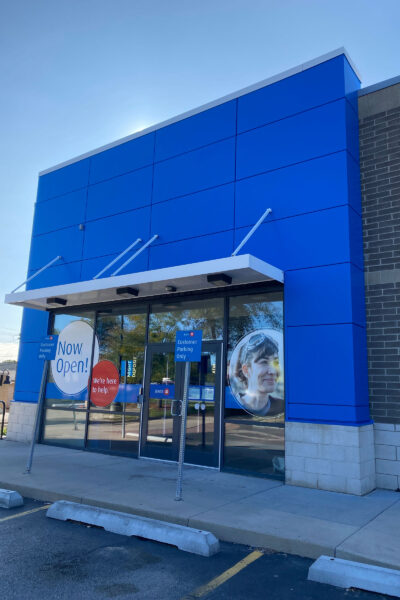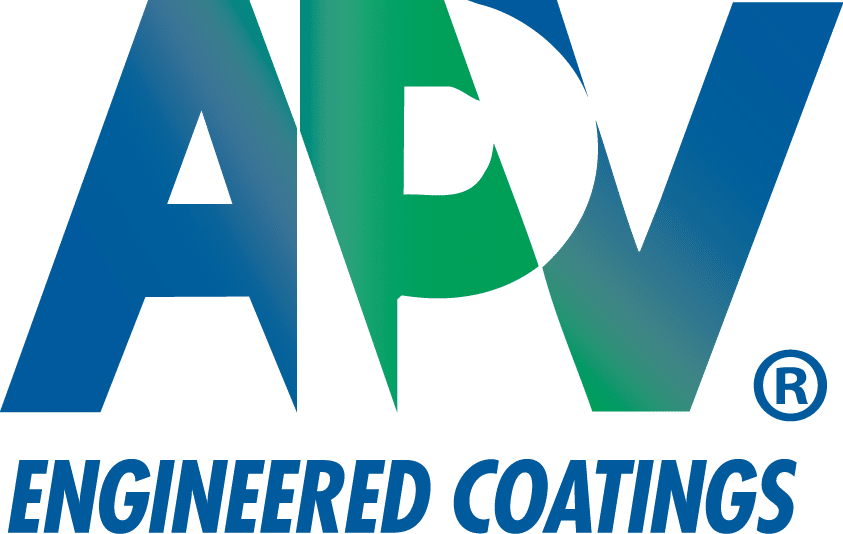Story at a glance:
- BMO Bank’s rebranding was a massive undertaking with more than 1,000 brick-and-mortar locations.
- As part of the product, signs on top of aluminum composite material were recoated with a low-VOC, water-based, field-applied coating system.
BMO Bank is the eighth largest bank in North America by assets, providing personal and commercial banking, global markets, and investment banking services to 13 million customers. The company’s branding story, which has roots in Montreal (as the Bank of Montreal) and Chicago (as Harris Trust and Savings Bank) has gone through significant evolution over the past century-plus.
The latest step in that evolution occurred in late 2023, when the bank’s legal entity name in the US changed from BMO Harris Bank N.A. to BMO Bank N.A. That change included a new logo and complete rebranding across all customer and client touchpoints. The rebranding, according to BMO, was designed to “embrace simplicity” and acknowledge the fact that “many customers and clients prefer to use the shorthand BMO in their dealings with the bank.
Part of the rebranding project involved replacement of exterior signage across all of the bank’s 1,000-plus brick-and-mortar locations—a significant undertaking. In fact, brand implementation experts BrandActive estimate that the cost to rebrand signage to reflect a new corporate identity can eat up to 70% of a company’s brand implementation budget.
Unique Collaboration Formed

The project’s signage installers had previously removed existing signage, leaving holes in the ACM panels that needed to be filled. Photo courtesy of Edge Façade
The property management company for BMO’s locations in the greater Chicago area chose Pattison Sign Group to manage the exterior signage replacement project. In business for more than 100 years, Pattison draws on its design, technology, and manufacturing expertise to create branded spaces that captivate, perform, and scale.
“Our clients depend on us to ensure that their brand is maintained for long-term use, with the highest attention to quality and care,” says Sam Johnson, general manager of facility branding for Pattison Sign Group. “We treat every brand as if it were our own.”
Some of the bank branches assigned to Pattison had signage installed on top of aluminum composite material (ACM) panels. Historically Pattison would lean on its ACM manufacturing capabilities to either replace the panels completely or reclad them with thin pieces of aluminum. However, for this job, they wanted to explore new options and turned to Edge Façade for help. Edge Façade specializes in the use of high-performance architectural coatings that renew the luster and protect the appearance of architectural metals.
“We were impressed with Edge Façade’s expertise working with ACM restoration,” says Jenna Graas, project manager at Pattison Sign. “Instead of replacing or recladding the panels, they recommended recoating them with NeverFade® Coatings—a water-based, field-applied coating system that comes with a 15-year product and labor guarantee, which gave us confidence that the refinishing would last for the long term.”
NeverFade Coatings contain Kynar Aquatec®, a polyvinylidene fluoride (PVDF) resin with super-strong carbon-fluorine bonds that do not break down under exposure to the elements, thus resisting the film erosion common with exterior-grade, acrylic-based latex coatings.
“For decades architects have trusted the long-term, fade-resistant performance of Kynar 500® solvent-based finishes, which are baked onto metal surfaces of exterior building products like aluminum doors and window frames at the factory,” says Ernie Porco, product application engineer for NeverFade manufacturer, APV Engineered Coatings. “Today Kynar Aquatec allows specifiers to get similar performance in a water-based resin formulated for field applications.”
Project Proceeds with Aggressive Timeline

The coating allows project specifiers to design with and specify bright and bold colors, secure in the knowledge that those colors will remain true for the long-term. Photo courtesy of Edge Façade
Graas says another reason Pattison Sign chose Edge Façade was their ability to meet an aggressive timeline by completing all work at 17 locations within five weeks—a potential challenge during the rainy fall weather. The NeverFade Coating system would help Edge Façade meet that deadline while managing costs because, unlike two-part or catalyzed coating systems, NeverFade is a one-part system, meaning no paint would be wasted if unforeseen weather issues hit.
One of Edge Façade’s first steps was to ensure APV would be able to match the color of its NeverFade formula to BMO’s brand color: a vibrant blue. “APV takes a unique approach to color,” Porco says. “While some paint manufacturers tout their ‘color of the year’ and push customers to their color vision, we let the customer decide. By custom-formulating each batch of NeverFade to the customer’s exact color specifications, we allow the building to reflect the owner’s brand standards, school colors, or any color aesthetic they desire. Project specifiers are better able to design with and specify bright and bold colors, secure in the knowledge that those colors will remain true for the long-term.”
Edge Façade did mock-ups to ensure APV’s custom-tinted formula was an exact match to BMO’s brand standards, then set to work removing weather-proofing sealants and caulking within and around the perimeter of the panels—a key requirement for subsequent coating adhesion.
The project’s signage installers had previously removed existing signage, leaving holes in the ACM panels that needed to be filled. Filling these holes can be a challenging process requiring highly skilled work, according to Edge Façade’s General Manager Chris Incorvaia. In some cases the Edge Façade team had to customize and apply an additional filler material to allow the primary Bondo Filler to properly adhere. “If you don’t achieve a good Bondo patch, you’ll see lumps and bumps in the panel surface when viewed at different angles,” Incorvaia says.
After the patches cured overnight, the Edge Façade team mechanically sanded the surface to create a perfectly smooth profile, then cleaned the panels with solvent to remove any dust and particles.
The coating process started with a spray application of APV’s W-1650 Bonding Primer, which is engineered to adhere directly to metal. That was followed by spray application of two coats of NeverFade Metal Restoration Topcoat. The final step in the application process was re-sealing of all joints with a color-matched, 100% silicone sealant.
Edge Façade encountered one potentially big obstacle during the project. Upon their crew’s arrival at several of the bank branches, they discovered that the signage panels were not ACM as expected, but high-pressure laminate (HPL). Based on APV’s lab data, and subsequent adhesion testing by Edge Façade, the team determined that the primer and topcoat used on the ACM panels would also work well on HPL. “Our bonding primer was the key,” Porco says. “It adheres well to virtually any material, even glass.”
“APV was extremely quick and agile throughout the process,” Incorvaia says. “As a smaller supplier they were able to accelerate their manufacturing process, even providing a handmade batch of coating from their lab when we had a last-minute rush order to complete one of the branches. A bigger supplier would never do that.”
Graas praised Edge Façade’s agility as well, pointing out that Incorvaia was extremely responsive and communicative during the entire project, readily accommodating the aggressive schedule and quickly navigating the occasional site-specific issue.
Quality Assurance at Every Step
Edge Façade took great care throughout the project to ensure that the job proceeded with an eye toward safety and quality assurance at every step. They secured the work area and adjacent parking spaces to make sure employees and bank customers did not have access, and they did most of their work using man lifts in the parking lots.
“We did our work during business hours, so we had to make sure we didn’t disrupt normal bank operations,” Incorvaia says. “One of the benefits of using NeverFade for a project like this is its low VOCs. It doesn’t create nuisance odors for building occupants or visitors, allowing us to proceed with no complaints from employees or customers.”
It doesn’t create nuisance odors for building occupants or visitors, allowing us to proceed with no complaints from employees or customers.
Throughout the coating application process, Edge Façade did multiple crosshatch adhesion tests to ensure that the coating adhered properly. They also measured the dry film thickness of both the primer and topcoat to ensure they were within the parameters required by APV’s product-and-labor warranty. Adhesion pull tests were conducted on the sealants as well.
Incorvaia says the results of the project exceeded the expectations of Pattison Sign, the property management company, and BMO Bank. He added that the success of the test project now gives Pattison Sign a proven option for future re-branding projects involving ACM panels.
“NeverFade gave us a consistent, high-quality finish and long-term warranty that did not require major disruption to our client’s facilities and allowed the project to be completed in a short timeframe compared to traditional ACM panel replacement,” Graas says. “Between Pattison, the property management company, the management group overseeing the re-brand, and the bank, we had a lot of eyes on the project. The final product looks incredible and will stand the test of time, allowing BMO Bank to maintain the integrity of their new brand.


